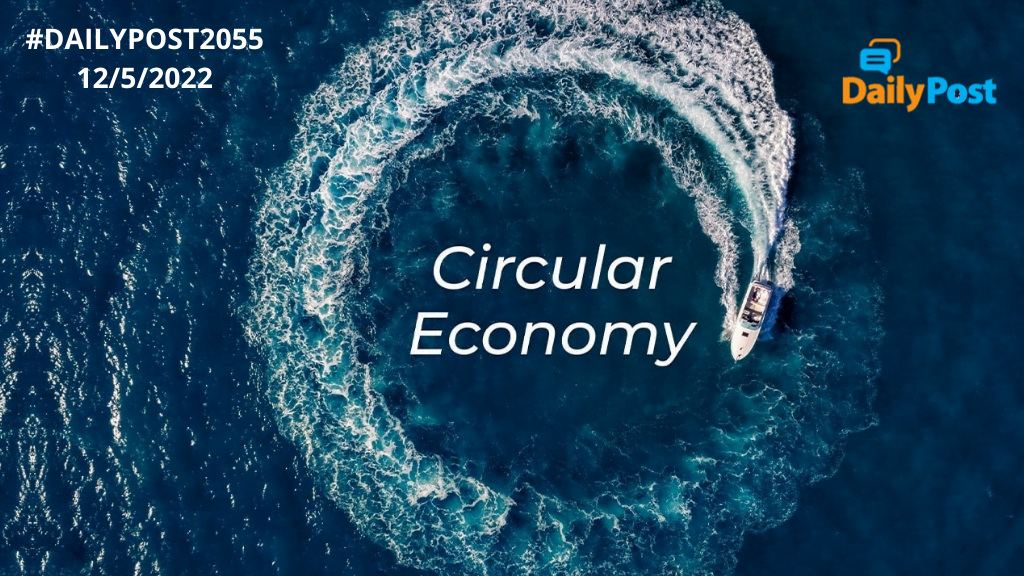DailyPost 2055
CIRCULAR ECONOMY
We always want our economy to do well, the growth rate should be remarkable and so should be the GDP growth. What we are bothered about are the financial parameters and that too becomes very difficult to maintain over a reasonable period of time. If somebody said that the basic architecture of the economy is faulty, you would find it to be very difficult to believe. After all it has been designed by the best economists and an ecosystem of growth and development, which has withstood the test of time. Today the fundamentals of that economy are being challenged, the very thought process that created the global economy and sustains its growth. The sustainability is under challenge and so is the thought process, that it is not in tune with the laws of nature.
The economy, though never discussed in this manner, is a linear economy that we profess and practice. The linear progression is taken through a lifecycle of take, make, use, dispose and pollute. ”Natural resources are turned into products that are ultimately destined to become waste because of the way they have been designed and manufactured.” This can be called the ”take, make and waste” economy. The concept of Circular Economy is generally defined in contradiction to the linear economy which we have practiced since ages. The circular flow concept is not new and was first enunciated as early as 1966 in a book by Kenneth E. Boulding, which talks of circular flow of materials and energy and what could be the nature of a ”cyclical” system of production.
Leave aside gaining prominence, ideas so diverse take time to even take shape at the conceptual level. The term ”Circular Economy” appeared for the first time in 1988 in ”The Economics of Natural Resources.” What does it actually mean, is it so distinct from the current system and what does it aim to tackle. This is a new model of production and consumption. The CE model ”involves sharing, leasing, reusing, repairing, refurbishing, and recycling existing materials and products as far as possible.” CE model aims to solve the challenges created by the Linear Economy model. The global challenges which have gone seemingly out of control is what this model aims to solve. These are all too well-known challenges of climate change, biodiversity loss, waste, and pollution.
What is required for the paradigm shift? It will not happen on its own. It’s time we start thinking about it. The three cardinal principles that would be required to move or metamorphose into a circular economy are; ”eliminating waste and pollution, circulating products and materials, and the regeneration of nature.” This is easier said than done. The mental architecture of our economy has to be in tune to understand and appreciate this thought process. This then has to gain entry into economic thought and has to gain some currency. Hitting the planning thought machine would be next. The circular economy model needs to be at the backdrop of our planning thought. Few clear-cut use cases can be the beginning. Understanding it to induce replication would be a trajectory shift in the direction of the circular economy.
AS A MENTAL CONSTRUCT THE CIRCULAR ECONOMY IS THE ECONOMIC ARCHITECTURE OF THE FUTURE.
Sanjay Sahay

